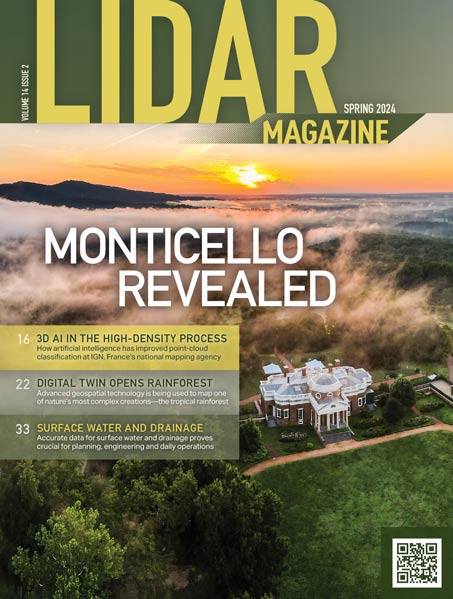Shepperton Studios, 27 January 2015 – Laser scanner modelling software from Arithmetica is helping to preserve some of New Orleans oldest and most historically important buildings. Using the Pointfuse point cloud processing software, Scan-Nola, a heritage preservation project is creating detailed 3D computer models directly from laser scanned data. The resulting models provide digital preservation for often derelict or deteriorating structures that can be used for conservation and restoration works, as well as garnering interest and support from the local community.
The first project to be completed by Scan-Nola using the Pointfuse processing software was the production of 3D models of the famous Dew Drop Inn.
Located on Lamarque Street in the heart of Old Mandeville, Louisiana, the original small wooden building is considered the worlds oldest, virtually unaltered, rural jazz dance hall. It was built in 1895, which is generally agreed as the year of the birth of traditional jazz in New Orleans.
Scan-Nola undertook the data capture element of the project with collaboration from surveying company Haag & Trammel. Using a Faro Focus X330 laser scanner, a two man team completed 13 scans in total – 9 exterior and 4 interior – within a couple of hours. These scans generated in the region of 12 million individual RGB coloured point measurements. Using Pointfuse, the data was transformed from high density point clouds into detailed DXF files for onward use in free to use, open source, professional computer graphics software, Blender.
I knew I needed an easy processing workflow to transform the point clouds into models that could be used in animations and virtual reality models.
Unfortunately the software we wanted to use was not compatible with the original point cloud files; in fact when we tried to import point clouds it became so slow it was virtually unusable, said Antoine Cottin, co-founder of Scan-Nola, So, Pointfuse made the impossible possible! It allowed us to create compatible models with plenty of detail. This also speeded up the processing workflow by at least a factor of a hundred.
Having tested a number of resolutions two DXF files were created; one of the inside and one of the outside. These files will be used to create clean mesh models in order to optimise their use in animations and for virtual visits, continued Cottin. The whole process was quick and easy. In fact one of the hardest parts of the whole process was a result of the fact that the building doesnt have a single straight wall! However with Pointfuse we can now accurately measure the buildings deformations.
Pointfuse is a powerful modelling engine developed by Arithmetica.
Pointfuse gives professionals an astonishingly fast, precise and flexible way of converting the vast point cloud datasets generated by laser scanners such as LiDAR into high fidelity vector models. Taking data from laser scanners mounted on vehicles, survey planes, tripods and even people and designed for engineers, architects and construction professionals, Pointfuse uses advanced statistical techniques to create vector models which can then be manipulated using any industry-standard CAD system.
Uniquely, Pointfuse is fully mobile compatible, and can process data from mobile scanners as easily and quickly as from terrestrial or airborne systems and its results can be output and used on standard handheld mobile devices for use in the field. Pointfuse is also the first software to offer truly automatic feature extraction. It automatically identifies features such as power-lines, bridges, gantries and crash barriers within the point cloud and extracts them within a matter of minutes.
Arithmetica is an innovator in 360-degree imaging solutions and automated
laser scanning data processing software. Located at the world famous
Shepperton Studios near London, Arithmetica is the company behind SphereVision and Pointfuse. Arithmetica is an inventive software house that develops ground breaking software solutions to solve real world scientific, medical and engineering problems. Arithmetica builds on more than thirty years of television and film production to develop software for clients around the world.
Arithmetica solutions handle complex data rich information and are simple and easy to use.
Arithmeticas wide-ranging experience and capabilities include: image analysis and computer vision for industrial and biomedical fields, massively parallel computation, multimedia data compression, data mining and machine learning, Monte-Carlo methods, traffic simulation, mathematical optimisation used in conceptual aircraft design, statistical estimation, computational fluid dynamics applied to aerofoil optimisation, nonlinear variable demand economics models involving millions of variables, finite element electromagnetic analysis, spherical image processing and 360-degree video presentation.
